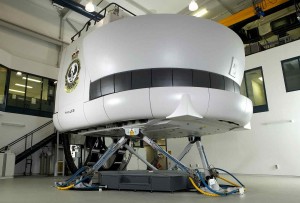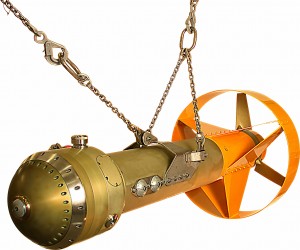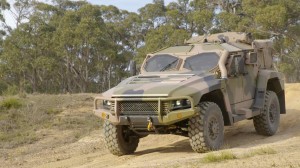2014-03-25 By Robbin Laird
Earlier I wrote about the role of European firms in the augmentation of allied Pacific defense capabilities.
In American discussions of the re-shaping of Pacific defense, naturally the primary focus is upon the American role and contribution. Lost in such a focus often is how the Asian allies are shaping their defense and security futures and shaping those futures in part by building upon evolving European systems.
European defense industry plays a growing role in Asian defense and security.
And they are doing so by offering core products of interest in the region and being congruent with core demands of the 21st century Asian customers.
The larger Asian customers clearly wish to expand their capabilities to produce their “own” equipment. What this means in a global age is that industrial partnerships between European and Asian firms are a key part of the growing European presence. This means as well that “re-export” of European systems from Asia will be part of the 21st century reality of the global market.
During my visit to Australia in early March 2014, I had a chance to talk with the CEO of Thales Australia, Chris Jenkins. We focused on the Thales engagement in Australia and highlighted the Thales business model in the country.

The basic dynamic for Thales in Australia has been as follows: transfer of technology from Europe to Australia, the shaping of indigenous capabilities which grow the ability to support and upgrade the product, and the export FROM Australia of maturing products into the global market served by Thales, with Thales providing a global support framework within which to insert exports from Australia.
According to the Thales website, Jenkins has a long history of working in Australia and with Department of Defence there.
Chris Jenkins is a defense industry leader, a passionate believer in local skills, and a strong advocate for Australian manufacturing.
He has held senior roles in Thales locally and internationally for over 17 years, playing a crucial role in transforming the company from five separate businesses into one of Australia’s largest suppliers of mission critical products and services.
His appointment as Thales Australia CEO in January 2008 followed two years as Vice President Operations, and before that three years as CEO of a Thales consortium in the Netherlands, delivering that country’s national public transport smartcard program.
Prior to this, Chris was Managing Director of Thales Underwater Systems in Australia from 1999 to 2003. He previously held senior marketing, sales and project director roles in the business, and was also a key player in its creation as a Thales/GEC joint venture in 1996.
Chris started in the defense industry as a mechanical engineer with Racal in 1981, Plessey in 1983, and then GEC Marconi in 1990 heading up its Underwater Systems business in Australia.
Chris is currently Chairman of the Board of Directors for the International Centre for Complex Project Management and Chairman of the AIG Defence Council. He is also a member of the AIG NSW Executive and the AIG National Executive.
He was a member of the Prime Minister’s Manufacturing Taskforce and is a member of the Manufacturing Leaders Group.
In the discussion with Jenkins, he highlighted the sonar business as an example of the Thales approach in Australia.The business started with the transfer of French technology to Australia in the early 1980s. The technology was used by the Australians to support their submarine program, and as the sonar systems were integrated into Aussie platforms, a team was created to support the technology, which basically meant, an ability to upgrade the system and to develop intellectual property along the way to shape the course of the modernization of the capability.
As indigenous capability was forged, the evolving technology was Australian and available for export, and has been done so in the UK Astute submarine program as well as in support of oil and gas platform support systems.
Thales started with a small team of French engineers working in Australia to transfer sonar technology and by the 1990s had nearly 500 people, mostly Australians, working on the program and exporting from Australia.
As Jenkins put it:
Australia is a long way away from major defense industrial centers in the West.
This means that indigenous support is crucial to the effectiveness of any program sold and then developed within Australia.
It is not just a ‘nice to have’ capability; it is crucial to the success of any technology imported into Australia.
This means as well that implanting the technology and supporting it leads to the real possibility of further development of the technology for global export.
We generate local engineering expertise through transfer of knowledge in the country. Then we generate the right solutions and agile responses to the nation’s evolving needs.
In the sonar related business areas, according to Jenkins, Thales has exported $300 million (Australian) dollars worth of sonar systems and $150 million (Australian) dollars worth of mine sweeping equipment.

This has meant that the further development of Australian-based sonar systems is paid for in part by exports and not simply by Australian defense programs.
According to Jenkins:
If you look at our sonar transducers, we’ve exported them to France for a wide variety of applications. Our mine-hunting sonars are exported into the wider Thales organization both into the UK and France. The mine-sweeping gear we jointly developed with the Defence Science and Technology Organisation (DSTO). We have a very close and important knowledge relationship with the DTSO.
And we have sold the minesweeping systems to a number of navies, including the US Navy, and the UK, South Korean and Japanese navies.
A very large number of navies have bought our minesweeping gear. It’s quite a breakthrough technology.
Jenkins focused throughout the interview on the importance of the sustainment of a product. By sustainment, he meant both maintainability and upgradeability of the product.
“It is about keeping the technology at the level the end user needs to meet whatever challenges the platform is meeting in its operational life.”

He underscored that the approach taken with regard to sonars has been followed in other business areas in Australia, such as air traffic management, protected mobility vehicles and simulation.
He discussed as well the vehicles area as one where Thales has played a significant role for the Australian Army.
The Bushmaster vehicle was designed in Australia, and we worked with the Australian Army to evolve the system over time as needs were identified.
We have exported a number of these vehicles to the Netherlands and Jamaica, and are currently pursuing other export opportunities.
Jenkins highlighted the basic approach being followed by the company in Australia as follows:
Thales was one of the first international investors to really embrace the idea of intellectual property exchange into Australia, with the expertise then further developed through training within Australia itself.
We built upon this approach with the acquisition of ADI Limited, which gave the company an important offering into Australian defense.
We concluded the discussion by focusing on the emergent role of unmanned maritime vehicles in the mine sweeping mission.
We see the emergence of robotic vehicles at sea as a key element of the changing business area for mine sweeping technologies, and are positioning ourselves to be in the forefront of the relevant technologies.
On the Thales portfolio in Australia see the following:
https://www.thalesgroup.com/en/homepage/australia

